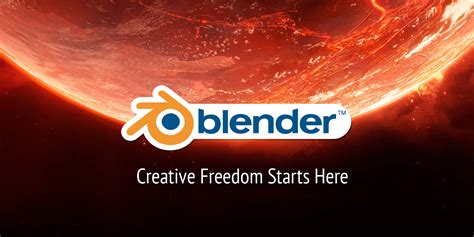1. Introduction to Blender
What is Blender?
Blender is an open-source 3D creation suite that supports the entirety of the 3D pipeline—modelling, rigging, animation, simulation, rendering, compositing, and motion tracking, even video editing and game creation.
Downloading and Installing Blender
- Official Blender Website: Blender.org
- Choose the version suitable for your operating system (Windows, macOS, or Linux) and install it.
2. Getting Started with Blender
Basic Navigation and Interface
- Blender Interface Explained
Video: Blender Beginner Tutorial – Interface
This video explains the basic interface and how to navigate through it, including understanding panels, menus, and navigation shortcuts.
First Steps: Moving, Rotating, Scaling
- Basic Transformations
Video: Blender Basics: Transformations
Learn how to move, rotate, and scale objects in Blender, which are fundamental skills for any 3D project.
3. Modelling in Blender
Creating Basic Objects
- Adding and Editing Meshes
Video: Blender Beginner Modelling Tutorial
Learn how to add primitive shapes and modify them using Blender’s modelling tools.
Extruding and Insetting Faces
- Working with Faces
Video: Blender Tutorial: Basic Modelling – Extrude and Inset
This tutorial shows you how to extrude and inset faces to create more complex geometry.
Subdivision Modelling
- Subdivision Surface Modifier
Video: Blender 3D Modelling – Subdivision Surface
Learn about the Subdivision Surface modifier, which is key for creating smooth, organic models.
4. Texturing and Shading
Introduction to Materials and Textures
- Applying Materials
Video: Blender Materials Tutorial – Beginner’s Guide
Learn how to create and apply materials to your models.
UV Unwrapping and Texturing
- UV Mapping Basics
Video: UV Mapping in Blender – Complete Beginner’s Guide
This tutorial covers the basics of UV unwrapping, which is essential for applying textures to your models.
Using Nodes in Shading
- Introduction to the Shader Editor
Video: Blender Shader Nodes Basics
Understand how to use Blender’s powerful node-based shader editor to create complex materials.
5. Lighting and Rendering
Setting Up Lighting
- Basic Lighting Techniques
Video: Lighting in Blender – Beginner’s Guide
Learn how to set up different lighting in your scenes to enhance the visual appeal.
Rendering Basics
- Introduction to Cycles and Eevee Render Engines
Video: Blender Rendering Tutorial for Beginners
This tutorial covers the basics of rendering in Blender using the Cycles and Eevee render engines.
6. Animation Basics
Introduction to Keyframes and Animation
- Animating in Blender
Video: Blender Animation Tutorial for Beginners
Learn how to animate objects using keyframes and the timeline.
Rigging for Animation
- Basic Rigging Tutorial
Video: Rigging in Blender – Beginner’s Guide
This video explains how to create a basic rig for character animation.
7. Advanced Topics
Sculpting in Blender
- Introduction to Sculpting
Video: Blender Sculpting for Beginners
Learn how to use Blender’s sculpting tools to create detailed models.
Particle Systems and Simulations
- Creating Particle Effects
Video: Blender Particle System Tutorial
This tutorial shows how to create and control particle systems, such as smoke, fire, or hair.
Compositing and Post-Processing
- Blender Compositing Basics
Video: Compositing in Blender – Beginner’s Guide
Learn how to use Blender’s compositor to enhance your renders with post-processing effects.
8. Blender Community and Resources
Joining the Blender Community
- Blender Artists Forum: Blender Artists
- Blender Stack Exchange: Blender Stack Exchange
Additional Resources
- Blender Documentation: Blender Manual
- Blender Guru Tutorials: Blender Guru
- Blender Secrets: YouTube Channel
9. Practice Projects and Challenges
Starting a Simple Project
- Modelling a Donut (Blender Guru’s Famous Tutorial)
Video: Blender Donut Tutorial
This project walks you through creating a complete scene, which is perfect for beginners.
Joining Blender Challenges
- Blender Community Challenges: Participating in challenges on forums like Blender Artists is a great way to practice and improve your skills.
Conclusion
Blender is an incredibly powerful tool with a steep learning curve, but with persistence and the right resources, you can master it. Start with the basics, and gradually move on to more complex projects as you become comfortable with the interface and tools.
Final Tip:
Regular practice and engaging with the Blender community will accelerate your learning. Try to create small projects and gradually increase their complexity as you improve.
Good luck, and happy blending!
